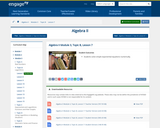
In this lesson, students solve simple exponential equations numerically.
- Subject:
- Math 2
- Mathematics
- Material Type:
- Activity/Lab
- Provider:
- EngageNY
- Author:
- EngageNY
- Date Added:
- 04/04/2014

In this lesson, students solve simple exponential equations numerically.
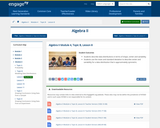
In this lesson, students describe data distributions in terms of shape, center, and variability. Students use the mean and standard deviation to describe center and variability for a data distribution that is approximately symmetric.

In this lesson, students use logarithms to determine how many characters are needed to generate unique identification numbers in different scenarios. Students understand that logarithms are useful when relating the number of digits in a number to the magnitude of the number and that base 10 logarithms are useful when measuring quantities that have a wide range of values such as the magnitude of earthquakes, volume of sound, and pH levels in chemistry.

Students will extend their study of functions to include function notation and the concepts of domain and range by exploring examples of functions and their graphs, focusing on the contrast between linear and exponential functions. They interpret functions given graphically, numerically, symbolically, and verbally; translate between representations; and understand the limitations of various representations.
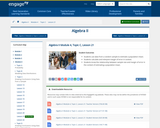
Students will use data from a random sample to estimate a population mean, calculate and interpret margin of error in context, and know the relationship between sample size and margin of error in the context of estimating a population mean.
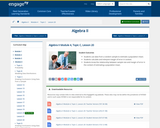
Margin of error is first developed visually and then estimated by twice the standard deviation of the sampling distribution of the sample proportion.
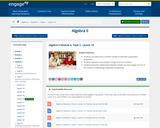
Students use data from a random sample to estimate a population proportion. Students calculate and interpret margin of error in context. Students know the relationship between sample size and margin of error in the context of estimating a population proportion.

Students will draw on their foundation of the analogies between polynomial arithmetic and base-ten computation, focusing on properties of operations, particularly the distributive property. Students identify and make connections between zeros of polynomials and solutions of polynomial equations.

Students will continue to interpret expressions, create equations, rewrite equations and functions in different but equivalent forms, and graph and interpret functions, but this time using polynomial functions, and more specifically quadratic functions, as well as square root and cube root functions.
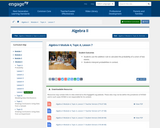
Students use the addition rule to calculate the probability of a union of two events. Students interpret probabilities in context.
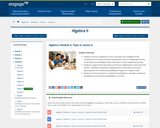
This lesson introduces the formulas for calculating the probability of the complement of an event, the probability of an intersection when events are independent, and conditional probabilities.

Students will analyze and explain precisely the process of solving an equation. Through repeated reasoning, students develop fluency in writing, interpreting, and translating between various forms of linear equations and inequalities and make conjectures about the form that a linear equation might take in a solution to a problem.
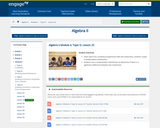
Given data from a statistical experiment with two treatments, students create a randomization distribution. Students use a randomization distribution to determine if there is a significant difference between two treatments.
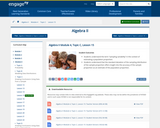
Students understand the term - sampling variability - in the context of estimating a population proportion. Students understand that the standard deviation of the sampling distribution of the sample proportion offers insight into the accuracy of the sample proportion as an estimate of the population proportion.

Students will synthesize what they have learned about functions to select the correct function type in a series of modeling problems. Students must also draw on their study of statistics, using graphs and functions to model a context presented with data and/or tables of values. In this module, the modeling cycle is used as the organizing structure, rather than function type.
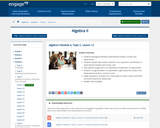
Students distinguish between observational studies, surveys and experiments. Students explain why random selection is an important consideration in observational studies and surveys, and why random assignment is an important consideration in experiments. Students recognize when it is reasonable to generalize the results of an observational study or survey to some larger population, and when it is reasonable to reach a cause-and-effect conclusion about the relationship between two variables.
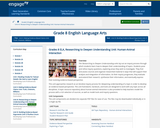
The Researching to Deepen Understanding units lay out an inquiry process through which students learn how to deepen their understanding of topics. Students pose and refine inquiry questions, exploring areas they wish to investigate. They find and assess sources and organize researched material in ways that will support their analysis and integration of information. As their inquiry progresses, they evaluate and extend their research, synthesize their information, and eventually express their evolving evidence-based perspective.
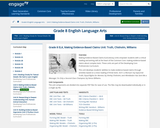
Making Evidence-Based Claims ELA/Literacy Units empower students with a critical reading and writing skill at the heart of the Common Core: making evidence-based claims about complex texts. These units are part of the Developing Core Proficiencies Curriculum.
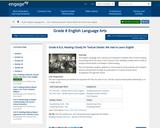
This English Language Arts /Literacy Unit empowers students with a critical reading and writing skill at the heart of the Common Core: Reading complex texts closely to analyze textual details and deepen understanding.
This unit develops students’ abilities to read closely for textual details and compare authors’ perspectives through an examination of a series of texts about immigration through Ellis Island.
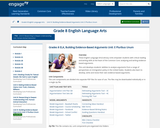
These English Language Arts/Literacy Units empower students with critical reading and writing skills at the heart of the Common Core: analyzing and writing evidence-based arguments.
This unit develops students’ abilities to analyze arguments from a range of perspectives on immigration policy in the United States. Students also learn to develop, write and revise their own evidence-based arguments.